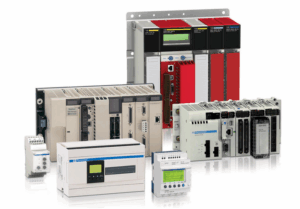As the digital era continues to evolve, data centers have become the backbone of the global economy, powering everything from cloud services and e-commerce to artificial intelligence and the Internet of Things (IoT). However, this unprecedented expansion of data centers has brought with it a significant challenge—an enormous strain on the world’s energy infrastructure. While the benefits of digital transformation are clear, the environmental and energy-related consequences of data centers’ massive energy consumption are starting to raise alarms across the globe.
The Energy Hungry Data Centers
Data centers are enormous facilities that house thousands of servers, storage devices, and networking systems, all of which require vast amounts of electricity to operate. In addition to power for the servers themselves, data centers require substantial cooling systems to maintain optimal temperatures, as the heat generated by these machines can quickly escalate to dangerous levels.
The global energy consumption of data centers is already substantial, and it is expected to grow dramatically in the coming years. As digital services expand in nearly every sector—finance, healthcare, education, and entertainment—the demand for data processing and storage capabilities is only increasing. In fact, some studies predict that global data center energy consumption could increase by up to 3 times in the next decade, potentially consuming 10-15% of the world’s total electricity supply by 2030.
This surge in energy demand presents a major challenge for many countries and regions, particularly those already facing energy shortages, an overburdened grid, or a reliance on non-renewable energy sources.
Impact on the Electrical Grid
While data centers may appear as isolated entities, their demand for energy has far-reaching consequences for the local and national electrical grid. As large energy consumers, they contribute significantly to peak power demand, especially during periods of high digital activity, such as during major online sales, large-scale streaming events, or as industries migrate to cloud-based infrastructures.
Many countries, especially in Asia and Europe, have experienced disruptions to their electrical grids due to the rapid expansion of data centers. As more data centers are built in already energy-constrained regions, there is an increasing likelihood of power outages and grid instability. Without adequate infrastructure and resources to meet this growing demand, countries face the risk of widespread blackouts or the need to rely on fossil fuels to stabilize the grid, which only exacerbates the environmental impact.
The Growing Environmental Footprint
The environmental impact of the growing data center industry is another significant concern. As the global demand for energy rises, so too does the carbon footprint of data centers, particularly in regions where the grid is still largely powered by fossil fuels. According to the International Energy Agency (IEA), data centers could account for up to 7% of global electricity demand by 2030 if current trends continue. This could drastically affect efforts to curb global warming and reduce greenhouse gas emissions.
While some data centers have begun transitioning to renewable energy sources—such as wind, solar, and hydropower—this shift is not happening fast enough to offset the rapid increase in energy consumption. Furthermore, energy-efficient technologies, such as artificial intelligence for optimizing energy use, are still in their infancy, meaning data centers continue to rely heavily on traditional energy sources.
Solutions: Balancing Digital Growth and Sustainable Energy
To address these challenges, a multi-pronged approach is required, with a focus on both improving energy efficiency and scaling up the use of renewable energy sources. Countries, cities, and businesses must collaborate to create a more resilient and sustainable energy infrastructure that can support the growing demands of the digital age.
- Investing in Renewable Energy: One of the most effective ways to reduce the environmental impact of data centers is to transition to clean, renewable energy sources. By investing in wind, solar, and hydropower, data centers can drastically reduce their carbon footprints while supporting the transition to a more sustainable energy economy.
- Upgrading Grid Infrastructure: Modernizing grid infrastructure to handle higher energy loads is another critical step in ensuring the reliability of electrical systems. Smart grid technologies, energy storage solutions, and improved transmission networks can help balance energy supply and demand more effectively, reducing the risk of grid overloads and power outages.
- Energy-Efficient Technologies: Data centers must adopt advanced energy-saving technologies, including cooling systems that use less energy, more efficient server hardware, and AI-driven tools to manage energy consumption more effectively. As these technologies become more mainstream, they could help data centers cut down on energy waste, significantly improving their overall sustainability.
- Regulatory Support and Policy Frameworks: Governments have a crucial role to play in creating policies that incentivize energy-efficient data centers and support the transition to green energy. Governments can also encourage research and development into new technologies that reduce the energy demand of data centers, while ensuring that energy infrastructure keeps pace with demand.
Conclusion
The growing global demand for data centers presents both opportunities and challenges. On the one hand, data centers are driving digital transformation, fueling innovation across industries. On the other hand, their voracious appetite for energy is putting immense pressure on the world’s electrical grids and environmental goals.
Balancing digital growth with sustainable energy use is critical for ensuring that data centers do not become a roadblock to a greener, more resilient future. By embracing renewable energy, improving energy efficiency, and modernizing grid infrastructure, we can create a world where digital progress and environmental sustainability go hand in hand.
As we look to the future, it’s clear that addressing the energy demands of data centers will be one of the key challenges of the digital age. But with collective action, innovation, and a commitment to sustainability, we can rise to the challenge and ensure that the digital revolution does not come at the expense of our planet.













